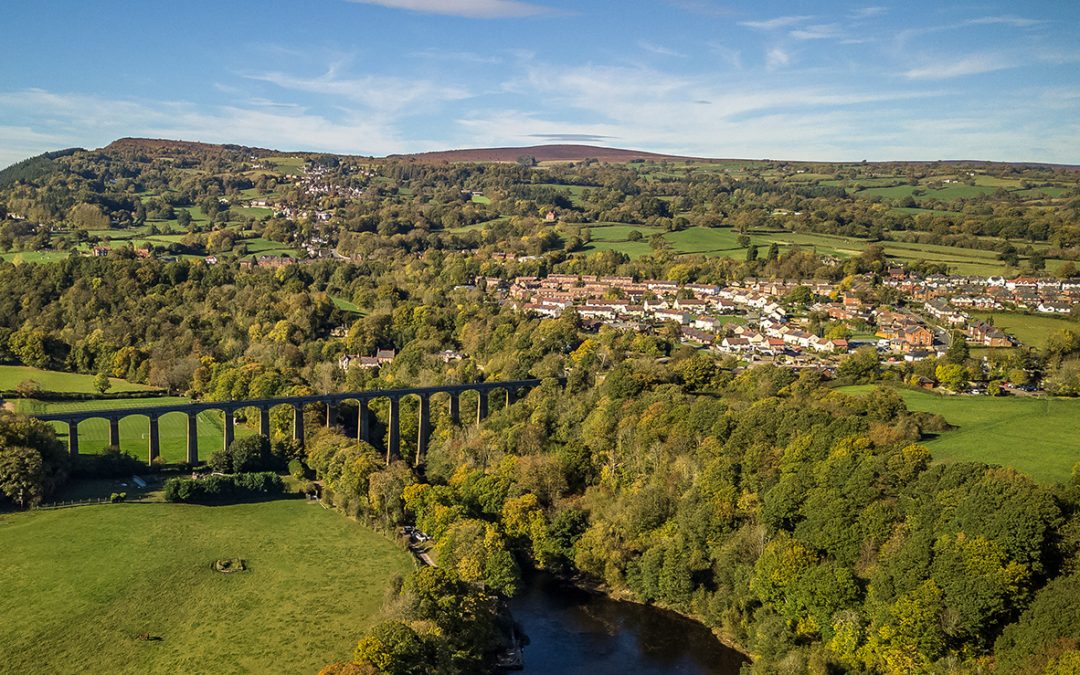Below sublime mountains, among sweeping valleys, and beside sparkling rivers, the ancient towns of Wales each entice with unique allure. Castles, legends, festivals, beaches, local quirks and historic curiosities are just a flavour of what awaits in this visitor’s guide to the best towns in North Wales and Mid Wales.
Towns in North Wales
Llandudno
Llandudno was crowned ‘Queen of the Welsh Resorts’ in 1864 and has reigned ever since.
Cradled by two outcrops of limestone headland and flanked by beach fringed ocean on two sides, the town rests in an eternal state of pleasant seclusion from the wider world. It was the Victorians who developed this ideal destination for relaxing seaside escapes, and the resort and has preserved its traditional charm ever since.
Among its stately, water-coloured boulevards and long, softly curving promenade visitors can enjoy Punch and Judy shows, fairground amusements and donkey rides. The town’s grade II listed pier is the longest in Wales and permits fishing. Explore friendly shops, stalls and arcades as you stroll its length.

Llandudno
North Shore Beach is the larger and more popular beach in Llandudno. Mainly pebbly, it has a few sandy sections, most of which are found up near the pier. Deckchairs are available for hire, and if you’re up for a thrill, book a ride on a speedboat.
If the North Shore Beach is the beach in Llandudno for fun and excitement, the West Shore Beach is the place to relax and unwind. Quieter and more laidback, this long stretch of sand is popular with kite surfers and those seeking hustle-and-bustle-free peace. The West Shore Beach has a café that serves dishes including a delicious full Welsh breakfast. Views from the beach extend over Conwy Bay across to Anglesey and up to distant mountain silhouettes of Snowdonia. Visit before dusk to watch the sun sink into the sea amid a smouldering blaze of red and purple.
The Great Orme is the colossal limestone headland that stands between the sea and Llandudno’s northern edge. Named by the Vikings, ‘Orme’ is old Norse for ‘sea serpent.’ Impressive and imposing though The Great Orme may be, its name belies this soft-at-heart monster’s unspoilt, sea-fresh tranquillity. Its summit is reachable by foot, tram and cable car. Once there, you can treat your eyes to panoramic views over the neatly laid out streets of Llandudno while sipping a drink from the bar. The Great Orme is a haven for rare birds and within it run the caverns, shafts and tunnels of an ancient copper mine.
Llangollen
Llangollen lies on the banks of the River Dee where its gentle current trickles out of the Berwyn Mountains. Connecting the two halves of this fairy tale town on the edge of the North Wales wilderness is its 16th century stone arched bridge. A haven for independent shopping, drinking and dining, Llangollen’s establishments include a dreamy bookshop and artisan eateries selling freshly baked pasties, locally made scotch eggs and pork pies, and a range of Welsh cheeses.
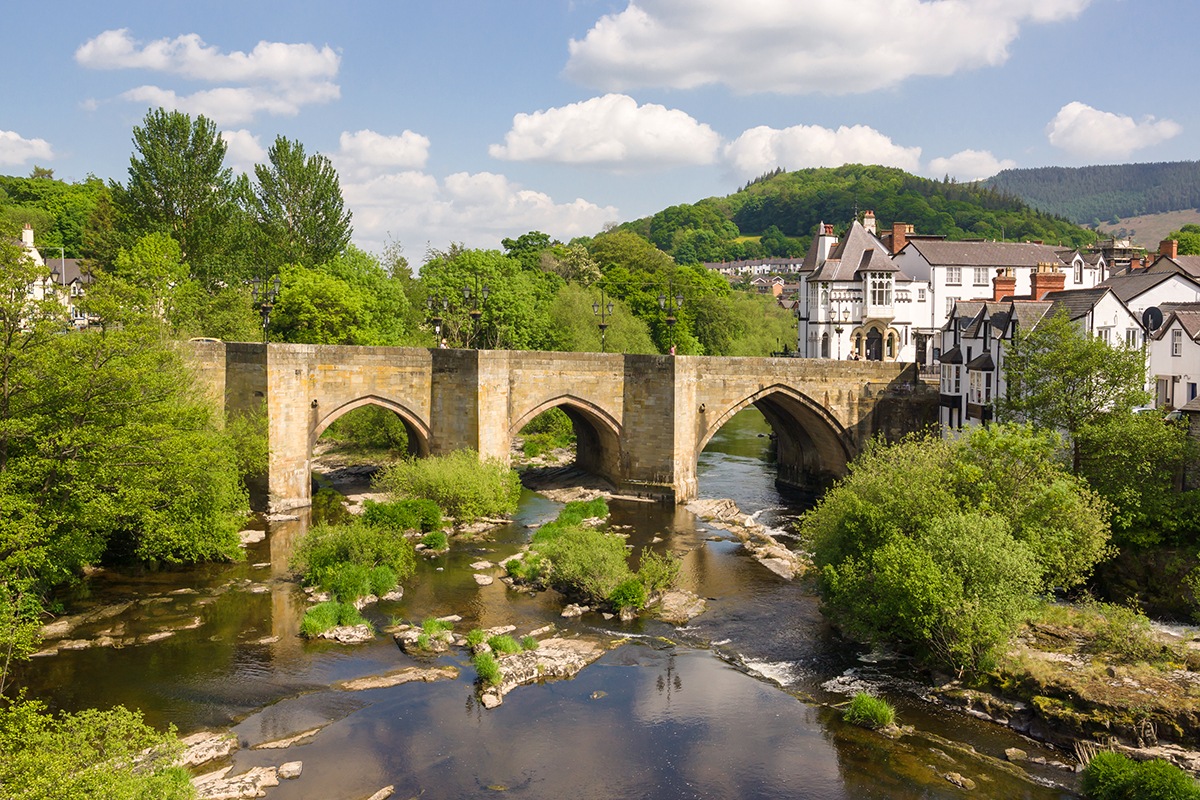
Llangollen Bridge
If you’re a history lover, be sure to visit Plas Newydd, a black and white timber framed and stained-glass windowed manor just outside of town. This historic house is the former home of the Ladies of Llangollen, two women who fled 18th century Ireland so they could be together. The house and its enchanting gardens now stand as a magnificent Gothic monument to their forbidden love.
If you fancy a walk, follow the 13-mile Eglwyseg Escarpment trail which begins and ends in Llangollen. During its course, the trail leads onto and along the high limestone escarpment then down through the narrow, forested vale of World’s End. Travel just a little further if you’d like to walk or float across the Dee Valley along Pontcysyllte Aqueduct, the highest navigable aqueduct in the world.

A Narrowboat Crossing Pontcysyllte Aqueduct
Llangollen is the annual venue for the International Musical Eisteddfod which has hosted dazzling performances from the likes of Pavarotti, Jose Carreras and Katherine Jenkins.
Portmeirion
As it happens, and as you may be surprised to learn, the most northerly Italian village sits on the north Welsh coast.
The steep, forested banks of the River Dwyrd may seem a strange place to find an opulent, brightly coloured, larger-than-life cluster of Italian Rivieraesque buildings, but that’s exactly where you’ll find one.
Stranger still, no one lives in Portmeirion. The town’s domes, spires, piazzas, and bombastic facades were designed by Sir Clough Williams-Ellis and built between 1925 to 1975. The eccentric architect wanted to prove that a naturally beautiful location could be developed in a way that enhanced it. His choice of exuberant architectural style is widely seen as a spirited reaction to the drabness of much modern architecture.
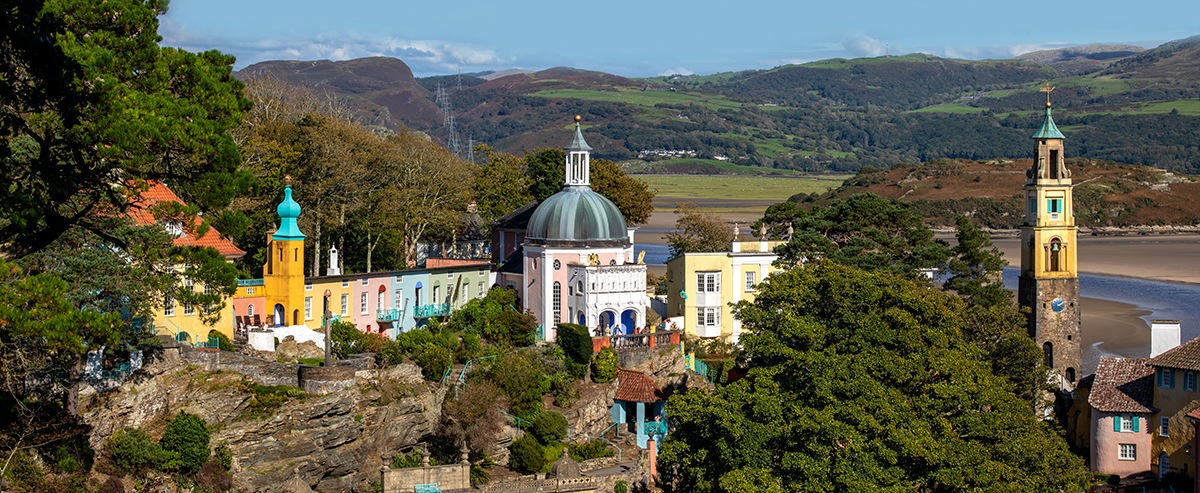
Portmeirion
If Portmeirion looks familiar, it might be because you’ve seen it in the 60s TV show, The Prisoner. The town welcomes visitors.
Conwy
Of all the historic coastal towns in North Wales, Conwy is the grandest. Built as part of Edward 1st of England’s ‘iron ring’, its city walls and mighty crag-top castle have guarded the medieval streets they tower above since the 13th century. The town is a UNECSO World Heritage Site and considered among the greatest surviving architectural relics of the age found anywhere in Europe. Climb the spiral staircases that lead to the top of the castle’s gigantic towers for views fit for medieval royalty that extend over the town, the River Conwy Estuary and the mountains of Snowdonia.
Make your way down into the town and you’ll discover more historic abodes to explore, which, though humbler, are no less fascinating. Abercowy House is the only surviving house from the time of Conwy’s construction and one of the oldest in Wales. Mingled among the buildings of Conwy High Street is Plas Mawr. This frozen-in-time home of a wealthy 16th century merchant with its grand fireplaces and intricately carved wood furnishings is one of the UK’s best-preserved Elizabethan dwellings and a wonderful window into the domestic lives of the era’s affluent traders. The bright red one up, one down Quay house is the smallest house in Britain. It was last inhabited by a local fisherman until declared unfit for human habitation in 1900.
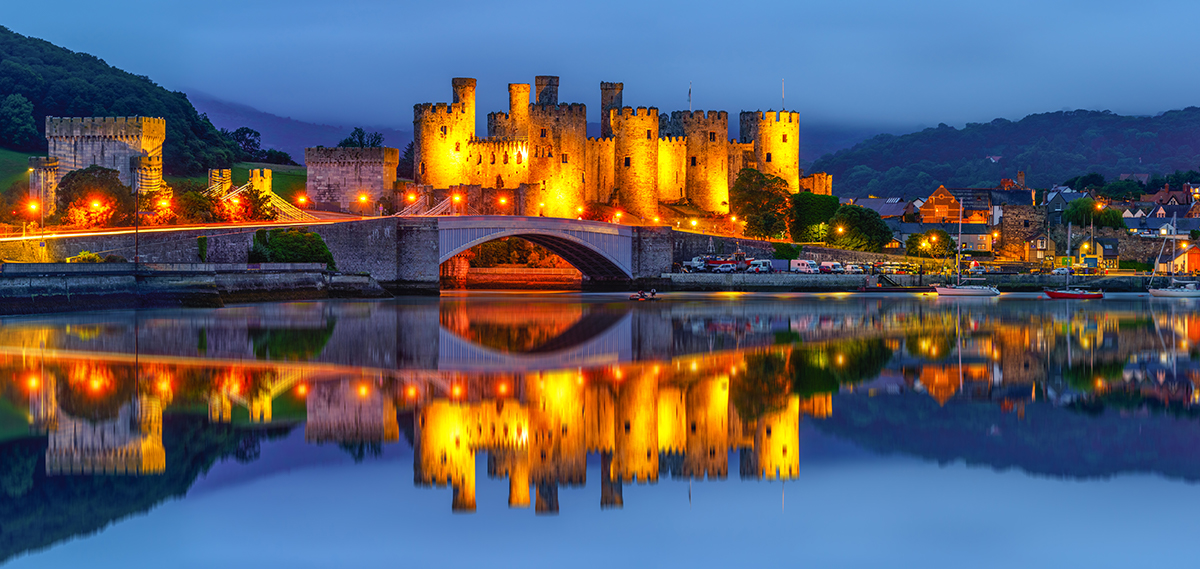
Conwy
Overlooking Conwy is the Druid’s Circle, a pre-historic ring of standing stones that has crowned the northern tip of the foothills of Snowdonia for 5000 years. As with all Britain’s stone circles, little is known about why this one was constructed or what function it served. But one theory suggests that its perch of lofty isolation was chosen to draw those who visit away from the world below and closer to the celestial realm of the heavens above. The Druid’s Circle and its surrounding landscape is a favourite among serenity seekers and wild ponies.
Conwy’s biggest annual event is the Gwledd Conwy Feast. Each year hundreds of foodies flock to the festival to tuck into food produced in the local area, throughout Wales, and from around the world. Festivities also include music, crafts and visual arts exhibitions and performances.
Towns in Mid Wales
Welshpool
At the heart of the wild England-Wales borderlands stands the market town of Welshpool. The bustling Georgian high street at its centre is just one of many picturesque attractions you can treat your eyes to here and within the local area.
The town lies in the shadow of Powis Castle. Centuries of refits and restorations have remodelled this medieval border fortress into a lavish country house and estate. Its exquisite interiors are home to the treasure amassed by Clive of India during the 18th century merchant turned conqueror’s colonial exploits in Asia. Beneath the castle’s battlements extend what are widely considered to be among the finest baroque gardens in the world.
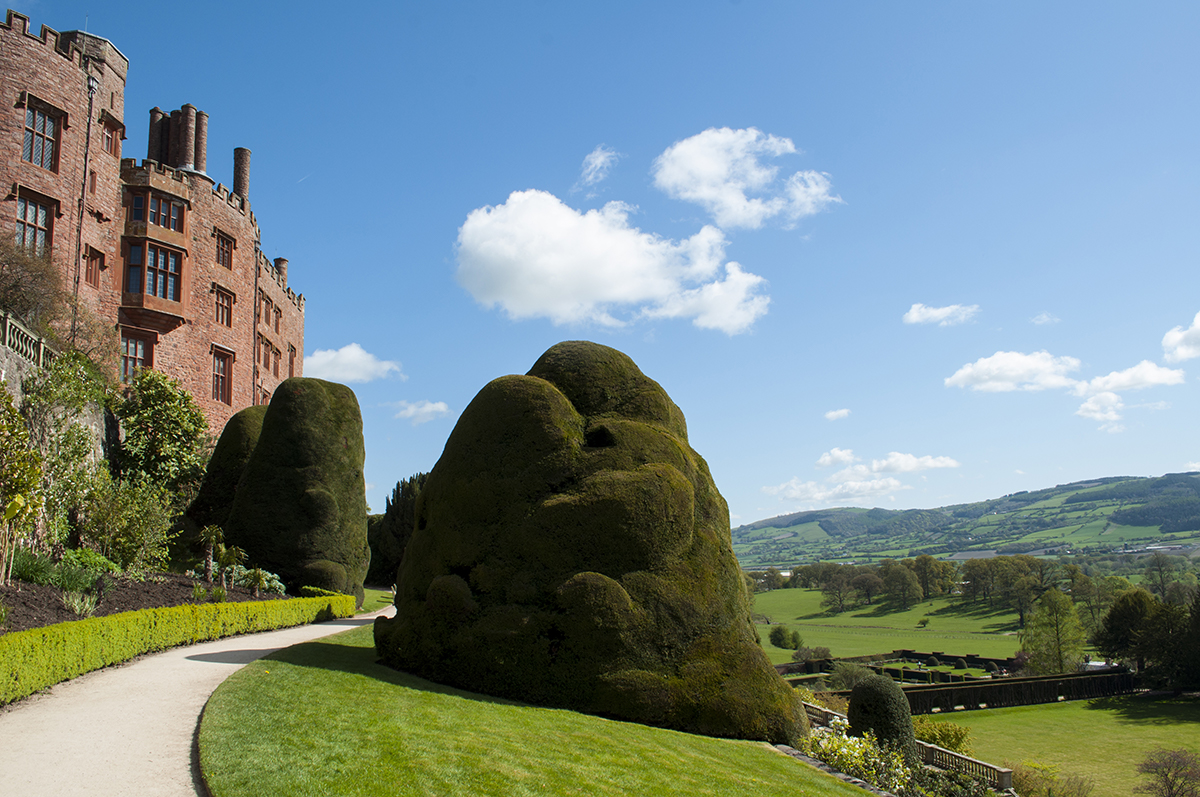
Powis Castle
Now green and tranquil, Welshpool’s surrounding area was for millennia a volatile frontier region. Local evidence of its turbulent past include the mighty earthworks of Offa’s Dyke and the sculpted slopes of Y Breiddin hillfort. One way of exploring the local area is to climb aboard a relic of its more recent industrial past, the Welshpool & Llanfair Light Railway. Welshpool is also where you will find one of the UK’s largest garden centres.
Llanfyllin
This ancient Brittonic town straddles the valley floor meeting point of the Cain and Able rivers below the foothills of the Berwyn Range. Its name derives from the 7th century Saint Myllin who is believed to be buried under the altar of Llanfyllin church. The holy well around which the town is centred is also dedicated to the saint.
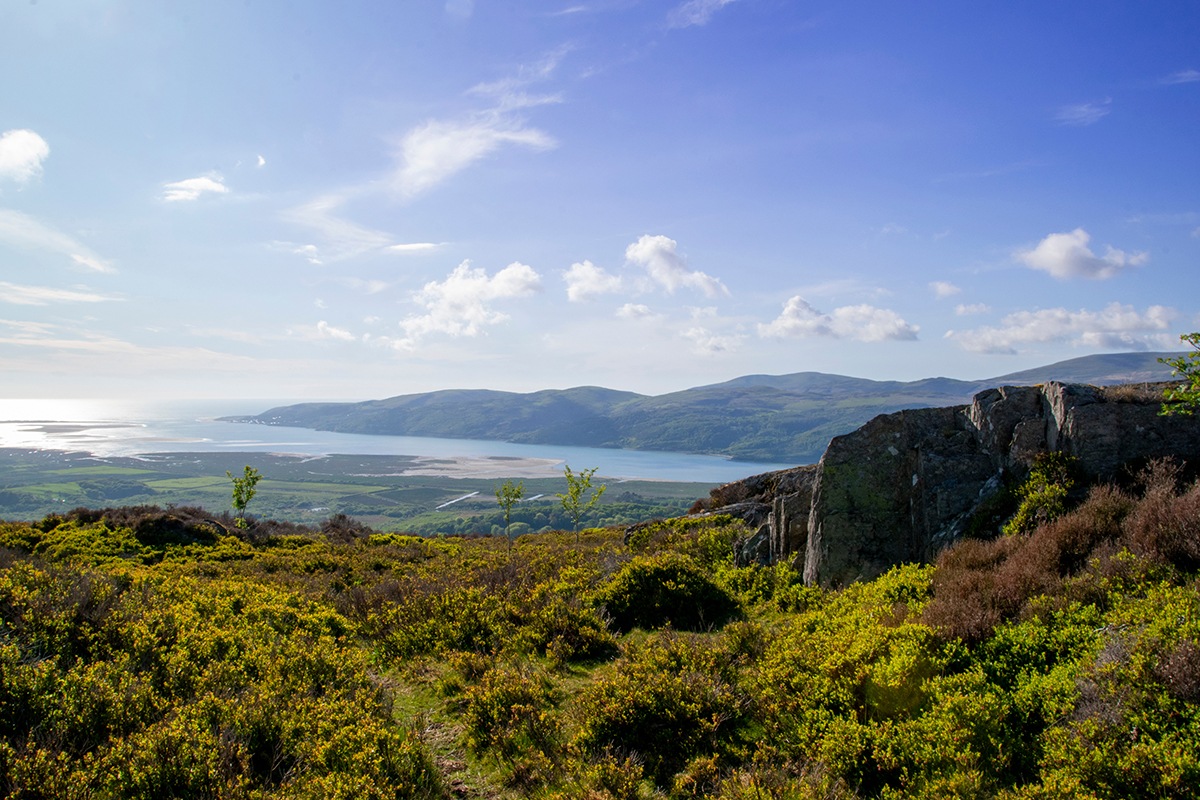
Dyfi Estuary
Today, this town in Mid Wales is a thriving hub of creative and alternative culture. What was once its workhouse has been transformed into a community art, heritage, environment and education centre which is open daily and welcomes visitors free of charge. The centre also hosts music festivals, art exhibitions and other special one-off events.
The Llanfyllin market is held weekly and the Llanfyllin County Show has been an annual local community highlight for 150 years.
Oswestry
Although across the border in Shropshire, Oswestry’s proximity to Wales has blurred its national character, and as the town is such a delight, it deserves its place in this guide.
Oswestry’s story began at neighbouring Old Oswestry, the 3000-year-old hill fort and legendary birthplace of King Arthur’s Guinevere considered by English Heritage one of England’s greatest historical monuments.
Past ages are also preserved in the modern town of today, much of which is a designated Conservation Area. Overlooking Oswestry’s quaint streets is a mingle of black and white timber framed buildings and grand Georgian townhouses. The Victorians left their architectural mark here too, visible in smart old shopfronts, terraced streets and neo-gothic churches.

Oswestry Museum
Visitor attractions include the Cambrian Heritage Railways and the quirky British Ironwork Centre. Oswestry remains a traditional market town with an indoor market, an outdoor street market and a fine selection of independent shops.
Machynlleth
It was here in this town at the end of the Dyfi Valley in 1404 that Owain Glyndŵr was crowned Prince of Wales. Today, local homages to the Welsh National hero include the town’s annual Glyndŵr Festival and the interactive exhibitions of the Owain Glyndŵr Centre, which is built on the site of the rebel leader’s first parliament.
One of the quirkiest towns in Mid Wales, Machynlleth is an assortment of antique shops, alternative lifestyle shops, and galleries stocked with works of local artists which exude the town’s laid-back, eco-conscious atmosphere. Discover local treasures and art in MOMA Machynlleth, a museum of modern art located in a Victorian townhouse and a former Wesleyan chapel called The Tabernacle. Wednesday is market day, and the town also hosts an annual comedy festival.
3-miles north of Machynlleth in a former slate quarry you’ll find The Centre for Alternative Technology. The centre’s School of the Environment offers practical day courses on all things green.
The woodlands, grasslands, reedbeds, and saltmarshes of nearby RSPB Ynys-hir Nature Reserve are great places for relaxing walks and the chance to spot rare birdlife.

Ynys-Hir Nature Reserve
Holiday Accommodation in Wales
If you’re feeling inspired to explore these amazing towns, enquire about our pet-friendly holiday cottage in North Wales with mountain views.
if you’d like to own a home from home at Glendower, browse our static caravans for sale in North Wales.

